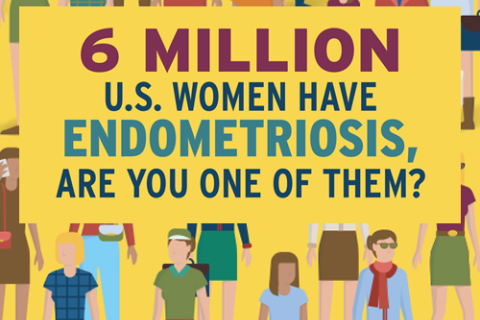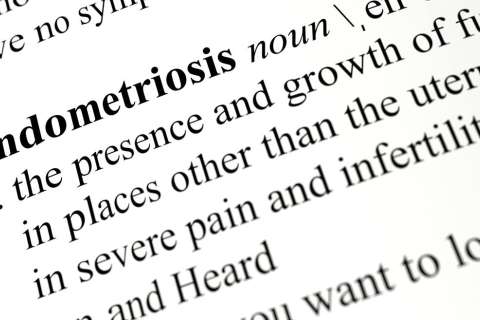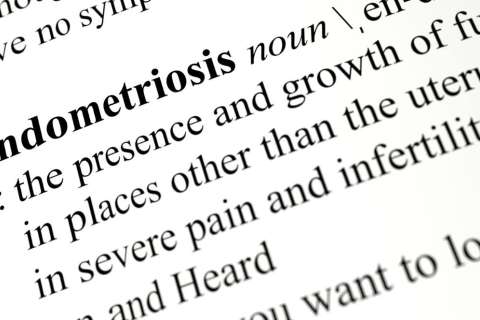Endometriosis
Find Your Care
Whether you need a preventative examination, pregnancy care or treatment for a gynecological condition, our OB/GYN specialists are here for you. Call 310-794-7274 to schedule an appointment today.
What Is Endometriosis?
Endometriosis is a disease in which tissue similar to the endometrium (the tissue that lines the inside of the uterus or womb) is present outside of the uterus. Endometriosis most commonly occurs in the lower abdomen or pelvis, but it can appear anywhere in the body. Symptoms of endometriosis include:
- lower abdominal pain
- pain with menstrual periods
- pain with sexual intercourse
- difficulty getting pregnant.
On the other hand, some women with endometriosis may not have any symptoms at all.
Approximately 10% of reproductive-aged women have endometriosis. Endometriosis is seen in 12–32% of women having surgery for pelvic pain, and in up to 50% of women having surgery for infertility. Endometriosis is rarely found in girls before they start their period, but it is seen in up to half of young girls and teens with pelvic pain and painful periods. Endometriosis can be diagnosed based on clinical symptoms and radiology imaging findings, but can only be confirmed via surgery.
What Causes Endometriosis?
Endometriosis Causes
The exact cause of endometriosis is unknown, but there are several theories that explain how and why endometriosis happens.
One theory of endometriosis origin is called coelomic metaplasia, in which cells in the body outside of the uterus can undergo changes to become cells that line the uterus. This is a common explanation for endometriosis at unusual sites like the thumb or knee. Another possible explanation for endometriosis in locations far from the uterus is that cells from the lining of the uterus travel through blood vessels or the lymphatic system, thereby reaching other distant organs or body areas.
Endometriosis can also spread at the time of surgery. For example, a woman with endometriosis that undergoes a cesarean section could inadvertently have endometriosis implant in the abdominal incision so that she develops endometriosis in the scar from the surgery.
Endometriosis is much more common if a close relative also has the disease, so there may also be genes that influence endometriosis.
Why Is Endometriosis Associated with Pain?
Endometriosis and Pain
When a woman with endometriosis has her period, she has bleeding from both the cells and tissue inside the uterus, and also from the cells and tissue outside the uterus. When blood touches these other organs inside the abdomen, it can cause inflammation and irritation, creating pain. Scar tissue can also develop from the endometriosis and contribute to the pain.
Get more information about our chronic pelvic pain program
Why Is Endometriosis Associated with Infertility?
Endometriosis and Infertility
Between 20 and 40% of women with infertility will have endometriosis. Endometriosis likely impairs fertility in two ways: first, by causing distortion of the fallopian tubes so that they are unable to pick up the egg after ovulation, and second, by creating inflammation that can adversely affect the function of the ovary, egg, fallopian tubes or uterus.
Get more information about our fertility and reproductive health services
What are the Symptoms of Endometriosis?
Endometriosis Signs and Symptoms
Pain is the most common symptom of endometriosis. Women with endometriosis can experience pelvic or lower abdominal pain, pain with menses (dysmenorrhea), pain with intercourse (dyspareunia) and pain during bowel movements (dyschezia). Symptoms can be constant or “cyclical,” meaning that they worsen before and during the period, and then improve. Women may have constant pelvic or lower abdominal pain as well. Other symptoms include infertility, bowel and bladder symptoms (bloating, constipation, blood in the urine, or pain with urination), and possibly abnormal vaginal bleeding.
How Is Endometriosis Diagnosed?
Endometriosis Diagnosis
Some physicians may treat suspected endometriosis based on a woman’s symptoms or physical examination findings to see if they improve without proceeding to surgery. Basic or routine ultrasound can miss evidence of endometriosis. Imaging with advanced pelvic ultrasound and MRI specialty protocols for endometriosis is often necessary to properly outline the extent and involvement of disease. However, to formally confirm a diagnosis of endometriosis, a doctor must perform laparoscopy (minimally invasive surgery in which a doctor looks in the abdomen with a camera through the belly button) to visualize and biopsy suspected endometriosis lesions. Endometriosis lesions can vary in appearance. “Endometrioma” is the term for endometriosis within an ovary, and is often nicknamed “chocolate cyst” because the material inside the cyst looks like chocolate syrup.
For information about minimally invasive and robotic surgery
What Endometriosis Treatment Options are Available?
Endometriosis Treatment
The most conservative therapy for endometriosis is with medications. Non-steroidal anti-inflammatory medications, like ibuprofen, may help with the pain associated with endometriosis. Medications that control a woman’s hormones may also help with endometriosis pain. Some examples are hormonal contraceptives like pills, patches, rings, and progestin IUDs or GnRH analogs.
Excision surgery can diagnose and treat endometriosis by removing lesions. Sometimes fulguration, or ablation, of lesions is appropriate also, but research shows that excisional surgery is the most effective surgical approach. With surgery, removal of scar tissue can alleviate pain and relocate the ovaries and fallopian tubes to their normal position in the pelvis. Surgery has been shown to help some women with endometriosis to become pregnant.
How does endometriosis affect fertility and my ability to get pregnant?
Almost 40% of women with infertility have endometriosis. Inflammation from endometriosis may negatively impact the function of the ovary, egg, fallopian tubes or uterus. In addition, scar tissue that is often present in patients with endometriosis can cause blockage or distortion of the fallopian tubes so they are unable to pick up and transport the egg after ovulation.
If a woman with endometriosis is having trouble getting pregnant, there are different medications and treatments available that can help her to become pregnant.
Get more information about our fertility and reproductive health services
Learn how endometriosis impacts fertility
Do I need to have a hysterectomy?
No, a hysterectomy is not necessary. Hysterectomy should be considered in women with endometriosis who do not desire child-bearing and who have abnormal uterine bleeding, heavy periods, or adenomyosis that is not responsive to medical management. Areas of severe endometriosis between the uterus and rectum may only be able to be excised in conjunction with hysterectomy, which is an important consideration in pre-operative planning between a patient and her doctor.
Is endometriosis cancer?
No, endometriosis is not a type of cancer. Some research suggests that women with endometriosis may be at a slightly higher risk of developing certain cancers. If you are concerned about your risk of gynecologic cancer, please talk to your healthcare provider.
Make an Appointment
For assistance in determining which provider may have expertise to help you, please call our appointment line 310-794-7274.
Endometriosis Articles





